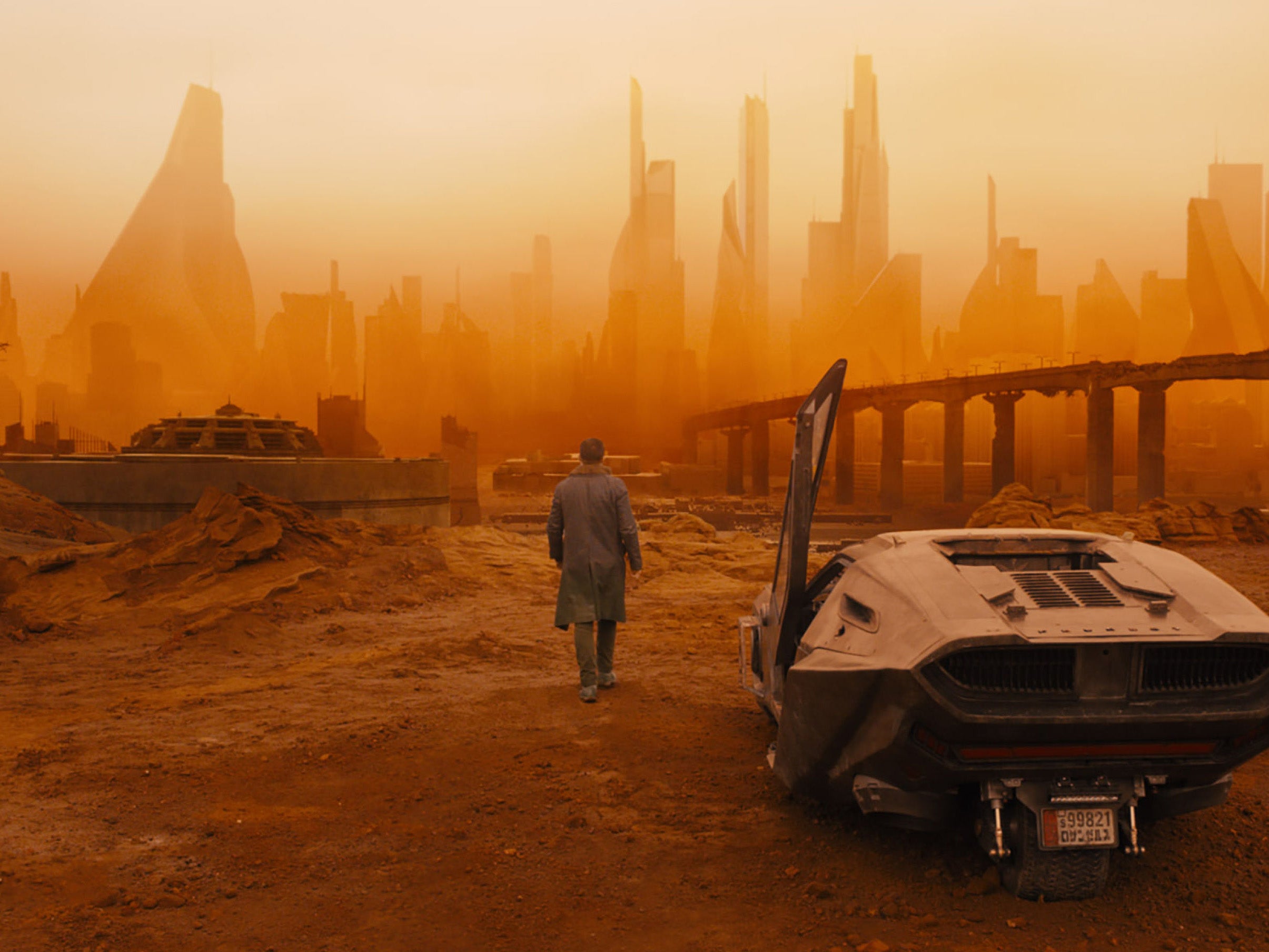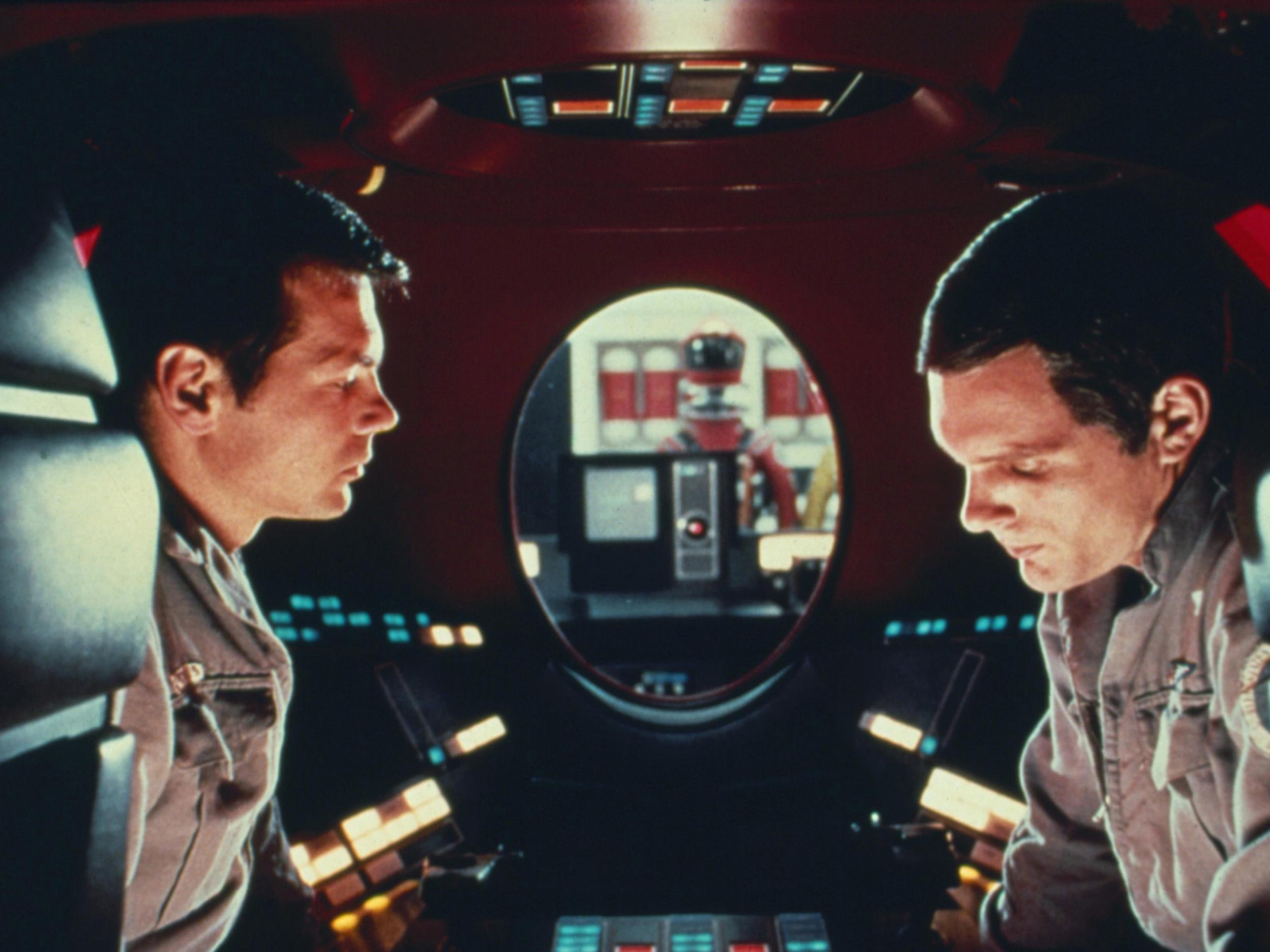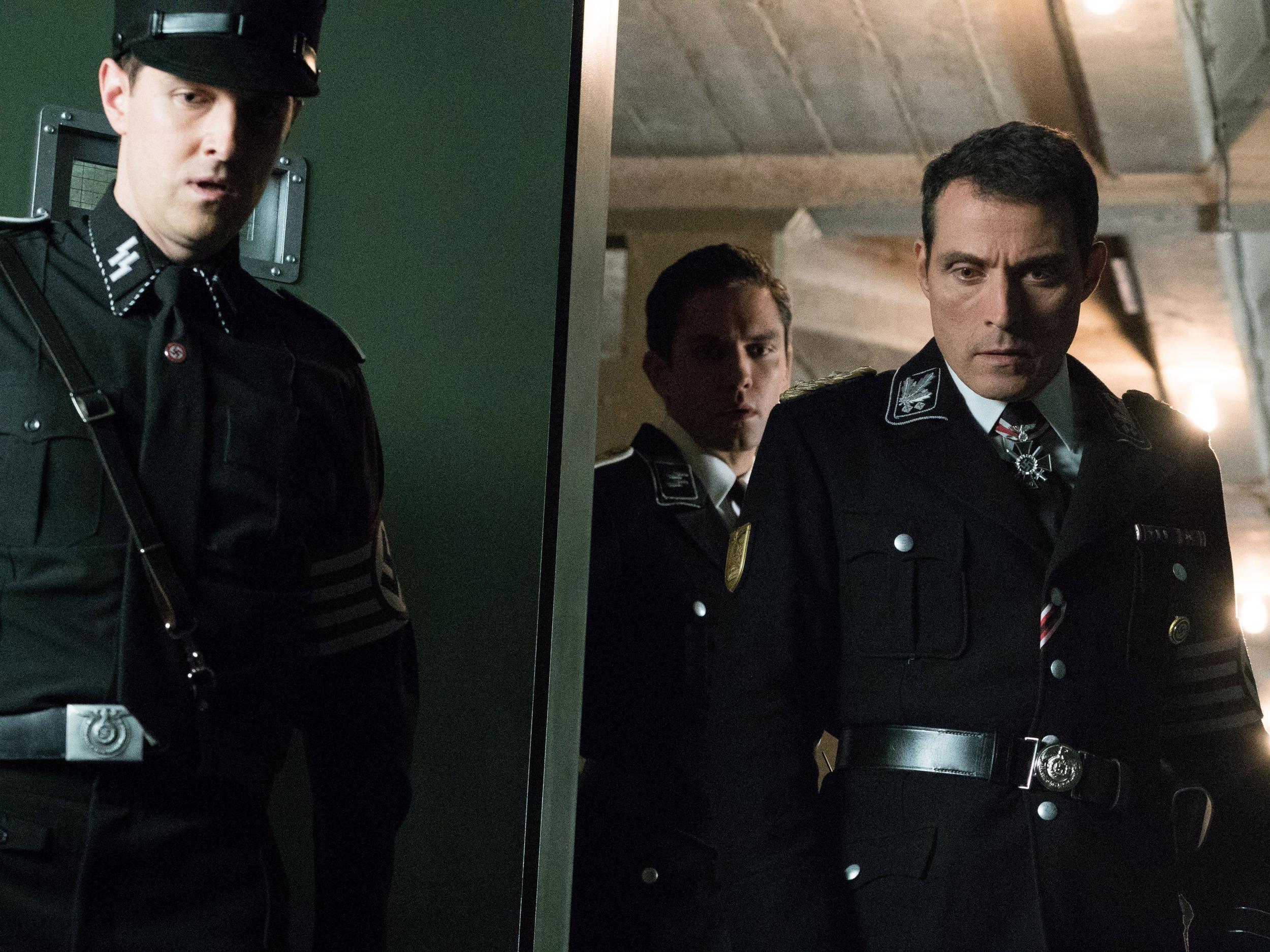In space no one will hear you scream, in Blade Runner 2049 the angst comes over loud and clear
This is not a Hollywood blockbuster. It’s more of a post-Cartesian meditation, a quintessentially French-inflected film, that should be thought of more as science-philosophy than science fiction. Andy Martin digs deep

I wasn’t there. Which is a shame. But it turns out that when Denis Villeneuve was giving his intro before the press screening of Blade Runner 2049 and threatened to set android dogs on over-eager hacks who might give away the plot, he was having everyone on. He was kidding. He had to be. Because, manifestly, there is no plot. There is nothing to give away. No spoilers. No clear-cut linear narrative to hang your hat on, no characters to speak of either. No decent car chases. Nothing. Nada. Or nothingness.
Which is not to say that there aren’t all the sorts of ingredients you might expect from a decent sci-fi flick: flying cars, post-apocalyptic landscape, replicants galore, and Harrison Ford. There is a beginning, middle, and end. But as Jean-Luc Godard once said, not necessarily in that order. This is not a Hollywood blockbuster. It’s more of a post-Cartesian meditation, a quintessentially French-inflected film, that should be thought of more as science-philosophy than science fiction. Sci-phi, with echoes of those similarly philosophical films 2001: A Space Odyssey (Kubrick), Solaris (Tarkovsky) and The Matrix series (Wachowskis).
The first Blade Runner had a classical narrative architecture and depended on a convergence of pursuer (Deckard/human) and pursued (Rachael/android/female). It was, in other words, a romantic robot thriller. The new Blade Runner is a deconstructive dystopia, that brings back Deckard but kills off his partner not just once but twice and tends to dissolve meaning and identity to boot. It is not a narrative, more a loosely collated set of discrete and disparate statements, resonant but rather mysterious aphorisms, floating in space-time.
Even to say it’s two hours 45 minutes long is misleading because, on the one hand, it’s still going around in my head, and on the other the sense of time inside the film is out of joint. Which is not so surprising given that Villeneuve also directed another recent sci-phi flick, Arrival, which argues that more advanced aliens have an elastic, freewheeling, non-linear perspective, and we need to overcome our inadequate and overly simplistic consecutive sense of chronology. Time is not a straight line or an arrow, it is a circle, a snake swallowing its own tail. TS Eliot’s “the end of all our exploring will be to arrive where we started and know the place for the first time” could work as the film’s tagline. (Maybe it’s not quite up there with “In space no one can hear you scream”).

The “New Wave” Blade Runner dramatises the seeming oxymoron of the maternal machine. As in any child-centred drama there are bound to be Biblical and Freudian overtones. The word “miracle” is perhaps too explicit. But I want to set aside the portentous religiosity and the occasional angelic choirs. It strikes me that there are two central themes: tekhnē and existential angst.
Probably the key scene in the whole film is also what I take to be the most technically challenging: in which there is an attempted, partial synthesis of two women, one “real”, the other a virtual construct, “Joi”, the product of an “emanator”. Both of them have a soft spot for Ryan Gosling. What makes it visually fascinating is how precarious and tenuous and flickering the fusion is, how the two kind of become one but also remain two. The twain do meet but in a perpetually unstable way. Not exactly harmonious. “Interlinked” to use a recurrent word from the film. “Superposed” quantum theorists might say.
The idea that gets put about all too readily is that the appeal of sci-fi is to the future: this is a prophetic vision, just a step or two ahead of the latest gizmo. I was reading just this week about how Jules Verne inspired the submarine. Rubbish. Verne invented nothing, dreamed up nothing, and was even cautious about the new-fangled bicycle.
Sci-phi appeals to history and archaeology. Blade Runner 2049 is all about digging things up. Villeneuve is clearly a follower of the French philosopher and ex-bank robber Bernard Stiegler, whose work on tekhnē (making or doing or communicating) focuses on the deep history of our close encounter with technology over the ages.
It’s not that we have suddenly become weirdly and freakishly dependent on our phones: we always have been intimately hooked into our tools and vehicles and accessories. This is why still the greatest “cut” in film history is when, in 2001 A Space Odyssey, one of the ape-men tosses a bone up into the air in triumph (having just beaten some rival ape-man to death with it), which then goes spinning across the sky in slow motion, and then (cut) morphs into a space station orbiting earth to the sound of a Johan Strauss waltz. Sci-fi emphasises the continuum through time.
Darko Suvin in Metamorphoses of Science Fiction argues that every significant work of SF must contain a “novum”. Maybe. But if so the novum in the new Blade Runner is an ancient, perhaps primal insight. It also explains the essence of the appeal of Philip K Dick, the author of the original Do Androids Dream of Electric Sheep novel that inspired Blade Runner.
Dick, whose work has inseminated contemporary culture, was not a particularly good writer. His prose is weightless, barely adequate. His plots are flimsy and ramshackle. But they are held together by a beguiling anxiety, verging on schizophrenia. As Emmanuel Carrère brings out in his brilliant biography, I am Alive and You Are Dead, Dick was perpetually on the verge of breakdown and disintegration (and attempted suicide).
There is a house in San Francisco where the walls are covered with his writing. Quite literally, the writing was on the wall for Dick. Having consumed more drugs than Hunter S Thompson at his peak, Dick spiralled into hallucination and mystic visions and filled thousands of pages with his ostensibly non-fictional ramblings towards the end of his life. Perhaps it is not so surprising if Dick was unclear about what was real and what was imaginary. At one time he believed that he had been taken over by the spirit of the prophet Elijah, at another that he was a Christian persecuted by Romans in the first century.
Dick’s fundamental insight spins out in two directions, sociological and psychological. The first of these takes the form, what if everything and everyone out turn out to be fake? In its most extreme expression, this is a type of solipsism, the sense that nothing is real. This perspective underpins such alternate histories as The Man in the High Castle (recently dramatised in the Amazon series) in which Germany and Japan won the Second World War and have divided up the US.
Bertrand Russell once suggested that the world could have been invented five minutes ago and all our memories simply implanted (just as, in Blade Runner, with Officer K). Likewise fossils and old dinosaur bones. And whether or not this is the case, nothing you can come up with (try it and see), no conceivable evidence, could possibly demonstrate that this is not so.
Everything would be an integral part of the lie (perhaps the work of aliens from a parallel universe with a perverse sense of humour). That is pure Philip K Dick. Everything is potentially a fake, “phoney” (in the word of his contemporary, JD Salinger, as voiced by Holden Caulfield in Catcher in the Rye). One of the more beautiful scenes in the film consists precisely of a woman who invents memories for a living, who has made a career out of false memory syndrome.

But to me the more profound suspicion at the core of his work concerns not the world at large but rather the inner self. The soul of his work is the sense that there is no soul. The greatest illusion of all is the self and it is out of this miasma of mirages that all other delusions flow. This is at the core of Blade Runner 2049. The original Deckard never has any doubts about himself. Classic Harrison Ford, in short. Ryan Gosling (Officer K), in contrast, is eaten up with angst about his own identity just as Dick was.
To come back to Bertrand Russell, he once said that we should never say, “There is a dog.” To be on the safe side, and bearing in mind the potential for deception and hallucination and sheer error, we really ought to say, “I see a canoid patch of colour.” Canoid: dog-like. Similarly, android (or replicant) – (wo)man-like. But the factor that Russell misses and which Dick himself could hardly manage to escape concerns the “I” in that sentence. What if the “I” likewise is only I-like, I-lite? What if “I” is more “i”, the fabrication of faceless corporations? Amid so much that is false and fictional, the biggest fake of all is me.
Which is where we come to the timeless appeal of Dick’s imagination. He speaks to the impostor syndrome in all of us. The difficulty of establishing any clear line in the sand between the real and the ideal lies at the origin of philosophy both in the west (Socrates theorised that the True, the Good, and the Beautiful must lie only in the realm of the archetypes) and the east (where the illusory samsara and maya predominate, but only until satori finally kicks in). David Hume in the Enlightenment and today Daniel Dennett insist on the essential constructedness of the self. The point of consciousness appears to be to fool us into thinking that “I” exist. Everyone is faking it.
When Simone de Beauvoir said that a woman is not born but made, she was speaking on behalf of everyone, not just women. And certainly for someone like Dick, who always feels himself becoming unmade all over again, the carefully constructed web of self-assurance coming undone and falling apart. This is the precariousness of existence that lies at the heart of Blade Runner. We are haunted not so much by the threat of death (which is peculiarly consoling, as is the fate of Joi – If I can die then I must be real surely?), but rather nothingness, exemplified in the sheer bleakness of the Blade Runner eco-system (in which nature has to be conjured up). I assume that this anomic mental state inspires the pervasive paranoia of so much science fiction, to the effect that “they” (always so much more self-assured) are taking over, whether it’s body snatchers, zombies, or triffids.
According to the uncertainty principle, there is a cat somewhere – Schrödinger’s cat – attached to a random particle-driven apparatus, who is both alive and dead, simultaneously. To be and not to be. This is the Dick paradox, who has a quantum cat built into his brain. This is the twilight zone, betwixt and between, neither-nor. Anyone who has ever said to themselves, “This cannot be real”, or “Who am I?” will feel right at home in the world of 2049.
Andy Martin is the author of Reacher Said Nothing: Lee Child and the Making of Make Me. He teaches at the University of Cambridge
Join our commenting forum
Join thought-provoking conversations, follow other Independent readers and see their replies
Comments